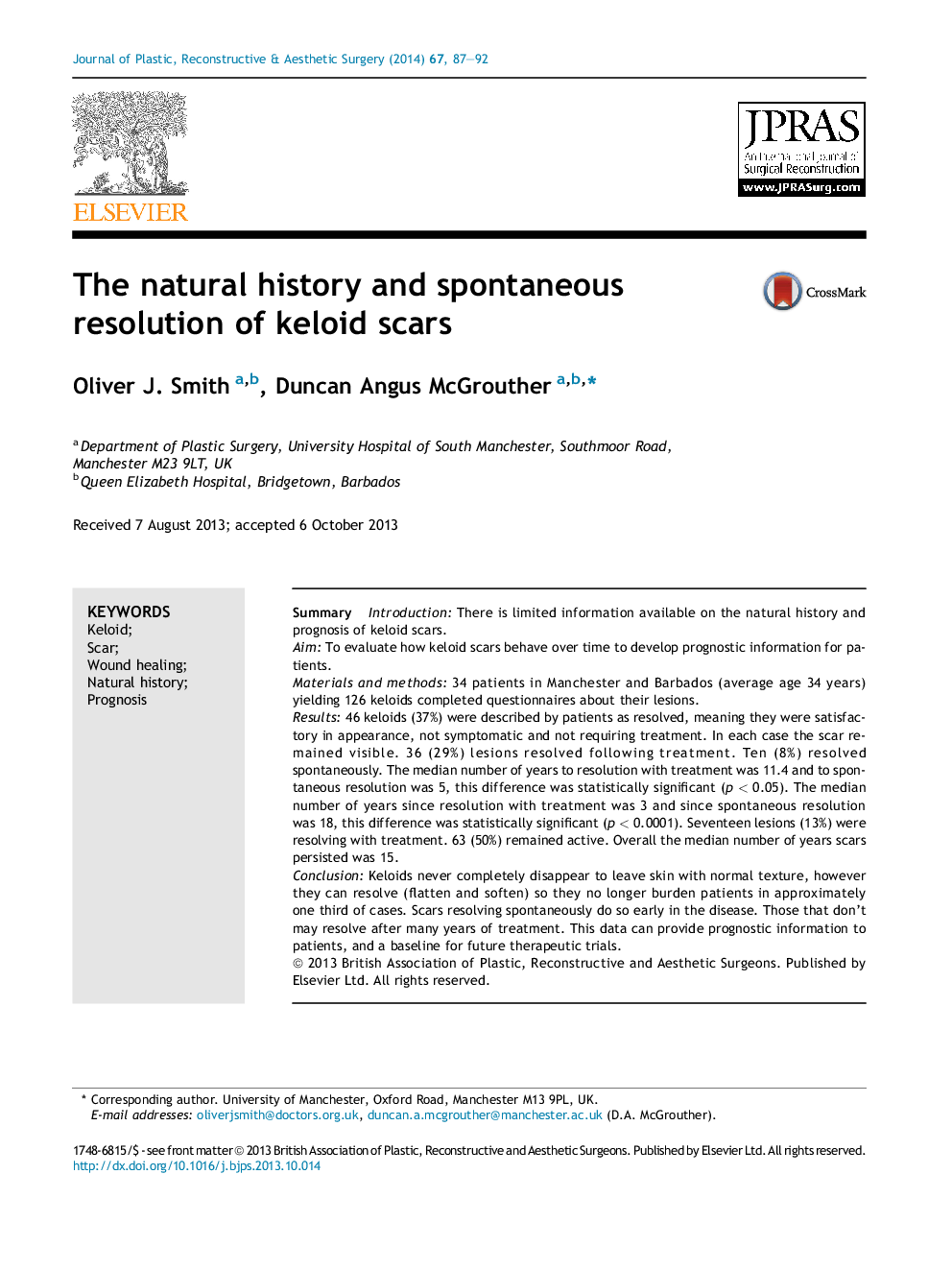| Article ID | Journal | Published Year | Pages | File Type |
|---|---|---|---|---|
| 4117764 | Journal of Plastic, Reconstructive & Aesthetic Surgery | 2014 | 6 Pages |
SummaryIntroductionThere is limited information available on the natural history and prognosis of keloid scars.AimTo evaluate how keloid scars behave over time to develop prognostic information for patients.Materials and methods34 patients in Manchester and Barbados (average age 34 years) yielding 126 keloids completed questionnaires about their lesions.Results46 keloids (37%) were described by patients as resolved, meaning they were satisfactory in appearance, not symptomatic and not requiring treatment. In each case the scar remained visible. 36 (29%) lesions resolved following treatment. Ten (8%) resolved spontaneously. The median number of years to resolution with treatment was 11.4 and to spontaneous resolution was 5, this difference was statistically significant (p < 0.05). The median number of years since resolution with treatment was 3 and since spontaneous resolution was 18, this difference was statistically significant (p < 0.0001). Seventeen lesions (13%) were resolving with treatment. 63 (50%) remained active. Overall the median number of years scars persisted was 15.ConclusionKeloids never completely disappear to leave skin with normal texture, however they can resolve (flatten and soften) so they no longer burden patients in approximately one third of cases. Scars resolving spontaneously do so early in the disease. Those that don't may resolve after many years of treatment. This data can provide prognostic information to patients, and a baseline for future therapeutic trials.
